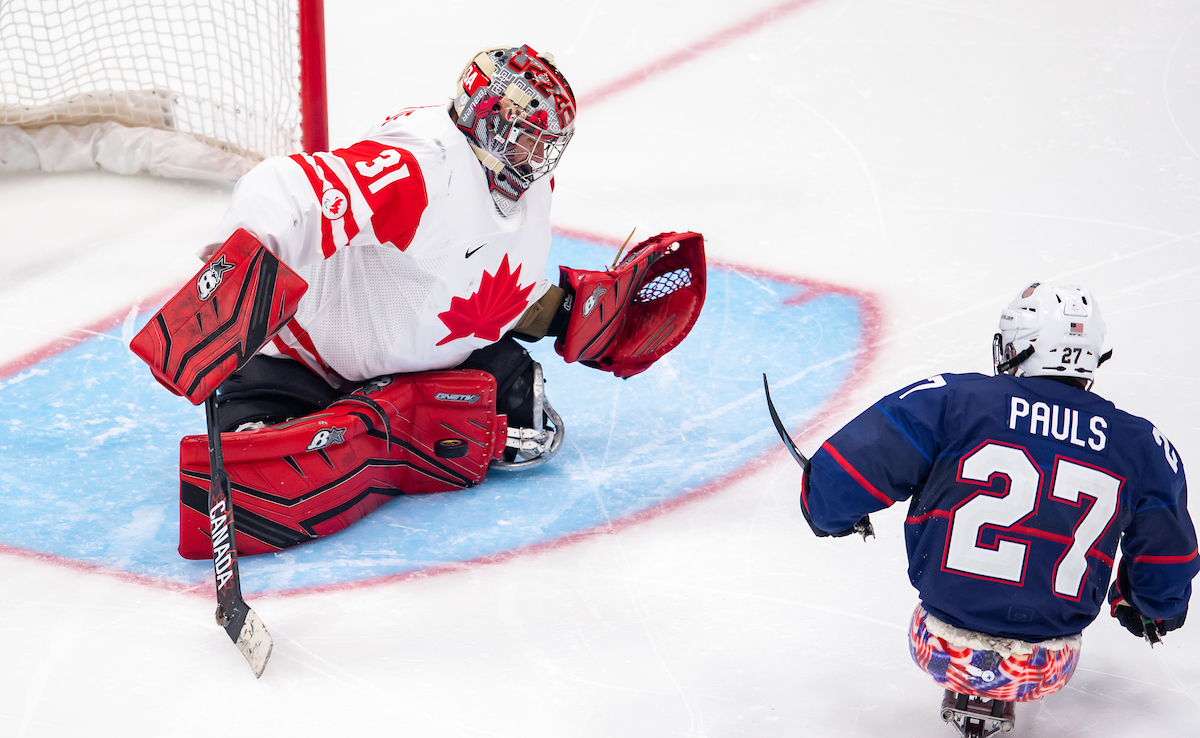
Para ice hockey
Winter Sports
Para ice hockey is the Paralympic sport version of ice hockey. Para ice hockey (formerly sledge hockey) was added to the Paralympic Winter Games in 1994. It is a fast-paced, highly physical and played by male and female athletes with a physical impairment in the lower part of the body. Instead of skates, players use double-blade sledges that allow the puck to pass beneath. Players use two sticks, which have a spike-end for pushing and a blade-end for shooting.
The goaltender may have an additional pick at the base end of his stick and may use an additional stick with a blade or wear a trapper glove. Teams are comprised of a maximum 15 players per team, including two goaltenders. Games consist of three 15-minute stop-time periods.
Canada has won medals at every Paralympic Games except 2002 and 2010 including gold in 2006.
The International Paralympic Committee is the world governing body. Hockey Canada is the National Sport Federation.
To participate in IPC competitions and sanctioned events (i.e. Paralympic Winter Games), athletes must have an impairment of permanent nature in the lower part of the body of such a degree that it makes ordinary skating, and consequently ice hockey playing, impossible. Examples include amputation, spinal cord injury, joint immobility, cerebral palsy and leg shortening of at least seven centimetres.
"*" indicates required fields